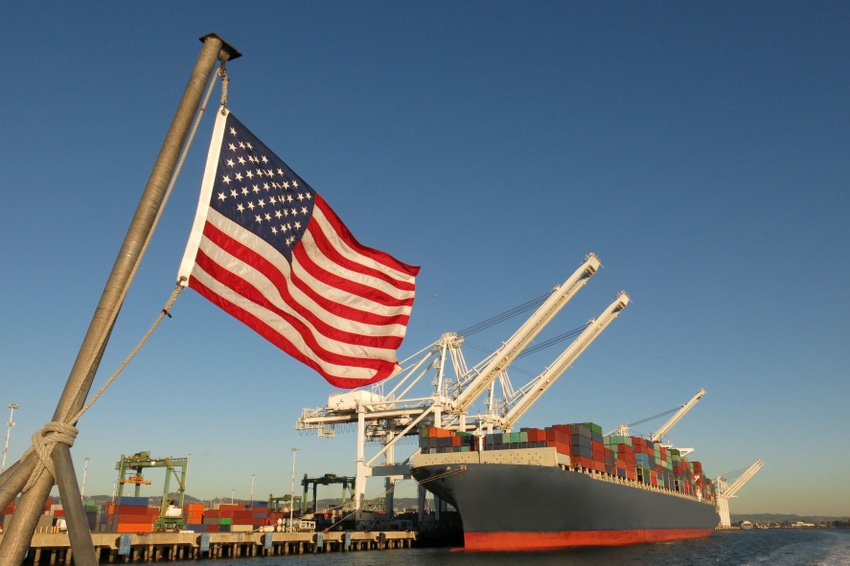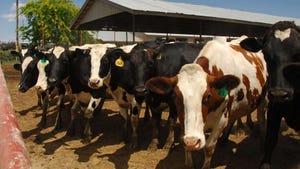Silver lining in liquidation is U.S. pork competitive advantage
What’s the current state of the global meat industry and what does it mean for U.S. pork production?

The global sow herd has been in decline now for about 10 years, and the biggest drop has come from African swine fever in China. Today, the trend has turned into global herd liquidation beyond China, however Brett Stuart points out “we don't have to have more sows to make more pork.”
“We've seen increased productivity around the world, especially 2023 and 2024. So, even though that sow herd is declining, and I think we'll decline in 2024, we're still going to keep stable pork production,” says the founder and president of Global AgriTrends. “Now, on a per capita basis, we've taken pork supplies per capita down 5% globally in 10 years. So, every man, woman and child on earth has 5% less pork than they did 10 years ago. Chicken is up 5 %, beef is down 10%, and that's kind of the layout of where we're headed globally.”
Stuart, who spoke during the National Pork Board’s recent webinar, “Insights into the USDA Quarterly Hogs + Pigs Report,” says liquidation is not only occurring across the global swine herd, but the global beef herd as well.
“We're in this unique spot where global meat and livestock is all falling into liquidation at the same time, which is interesting as you think about what's going to happen in ‘24, ‘25 and ‘26,” Stuart says. “What I'm telling you, we're going to have less meat and poultry the next three years globally.”
However, the “silver lining” for U.S. markets is how competitive they are globally, he says. Today U.S. hogs are about $23/hundredweight below European hog prices. The biggest hog production base outside of China, Europe has faced several issues from the Ukraine war and sanctions on Russia, to limited energy supplies and climate and animal welfare policies. The EU swine herd has decreased 9% in two years, and European exports have dropped 24% in the last year. Stuart expects the U.S. to surpass Europe in 2024 to become the largest pork exporter globally.
As for U.S. pork exports, Stuart expects to see more than 6% growth in 2024, especially with weekly export sales data showing shipments to Korea up nearly 80% and shipments to Japan over 20%. With Europe’s market share in Korea dropping, the U.S. and Canadian pork industries have picked up the slack.
“We ship a lot of shoulder butts into Korea. The Europeans were shipping bellies. And, weirdly enough, this relationship we have with Europe, imagine a market where bellies are cheap and hams are expensive, and that's what Europe is,” Stuart says. “And so, we kind of played okay together, but the big drop in that EU production means the Koreans aren't even getting their bellies now. They're not buying bellies from us, they're buying more and more butts.”
Stuart anticipates the U.S. to get more business from Australia, which has been a decent ham market for the U.S. in the past but was lost to Europe based on pricing. He’s also projecting some solid growth into Japan, as well as from Canada, this year to backfill some of that lost EU supply.
As for China, Stuart says there is no doubt there is an increased relationship in agriculture between China and Brazil, and it is growing.
“It's not just corn, it's pork, it's beef, it's everything,” Stuart says. “China and Brazil have a very cozy relationship now with meat and poultry, and that's going to continue.”
While China is home to 57% of the world's swine herd and 18% of the world's population, the country only contains 10% of the world's arable land. Thus, the reason we are seeing China lose self-sufficiency in every major agriculture product, Stuart says.
“They imported $234 billion in agriculture last year. They're buying more and more from Brazil and less as a percentage from the U.S.,” Stuart says.
As for the Chinese hog market, after liquidating nearly two thirds of their swine herd in 2020 due to ASF, Stuart says they been operating below break even. “Our estimate is they lost somewhere around $13 billion last year, farming hogs in China, and these are the big guys, the small guys, everybody,” he says.
An oversupplied market, pork imports into China were the lowest in 8.5 years in February and were down 40% from a year ago. The combination of a weak economy and overproduction has extended the loss cycle in China.
“This is the longest hog cycle of losses that I've seen in 20 years, and it's really based on government credit to the big hog farmers. They have been much more generous, funding those big guys and keeping them going. They're trying to encourage production from the big mega farmers. But those financial losses hit everybody, and you'd have to ask yourself, how long can that easy credit last?” Stuart says.
While the Chinese government has put an emphasis on larger farms, Stuart points out the top 12 hog farmers in China, only make up about 30% of the annual slaughter and annual slaughter is still around 720 million hogs.
“So, 70% are mid to small size farmers. These guys don't have the same access to credit, and I think that's what's leading to this liquidation right now in China, the big guys don’t want to liquidate,” Stuart says. “They want to build more plants, build more farms. They have big asset bases. They're waiting for this market to turn, and so what that tells me, we're going to have extended losses here into 2024.”
What does this all mean for global meat and poultry? Even with weak demand and abundant supplies, Chinese demand for imported meat and poultry should remain stable. Stuart refers to 2023 as an example.
“China had a really tough economy in 2023, but beef, pork and poultry imports still totaled almost 7 million tons, right where they had been the previous year,” Stuart says. “2024, maybe a tale of two halves.
I think the first half is going to be really weak, and we're seeing that in the preliminary data. No big numbers for imports. The second half could see improved demand and it depends on the economic news. It depends on how well they can clear those big frozen beef inventories and how deep they liquidate this swine herd.”
Mexico will continue to be a major target in 2024 for U.S. pork exports, as they are now buying 10% of the entire U.S. pork production, the main cut being bone-in hams. While Mexican hog prices have declined, Stuart says they are still at a good profitable level.
“We still have a good competitive advantage. The thing to watch for, if we see those Mexican hog prices drop to unprofitable levels, then there's going to be more pressure against imports,” Stuart says. “Right now, we're price competitive. The Mexican peso is strong and we're in a good spot. I think we're going to have another good year this year on pork shipments into Mexico.”
Finally, Stuart points out global protein supplies are tightening, and it’s not just pork. While U.S. beef production is down 4% year to date, there is also herd liquidation going on in Brazil and Australia. In Germany, the swine herd has decreased 18% in two years. He refers to a recent survey that found one third of German hog farmers believing they will not be in business in the next five years.
“There's some real decline in that EU swine herd, and that opens up a lot of ground for us in this global market. U.S. pork remains very competitive globally. China remains a wild card. We'll see where that goes,” Stuart says. “I still think China's working very hard to diversify away from the U.S. as an agriculture supplier. We've seen it in the corn markets, and I think they're going to slow play any big purchases of U.S. pork. The big shift this year will be reduced European pork supplies, and I expect that liquidation to continue beyond 2024.”
About the Author(s)
You May Also Like



.png?width=300&auto=webp&quality=80&disable=upscale)

